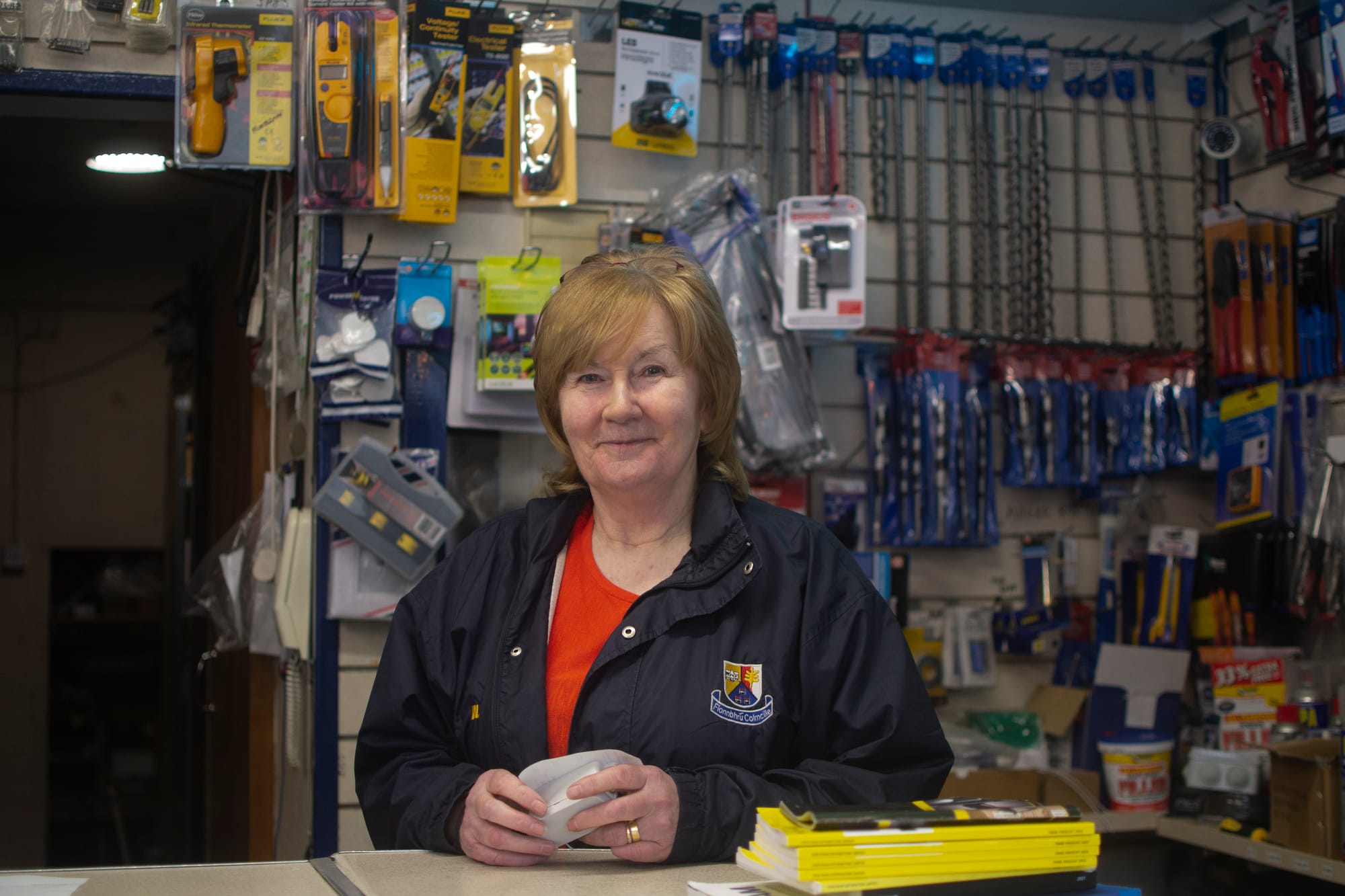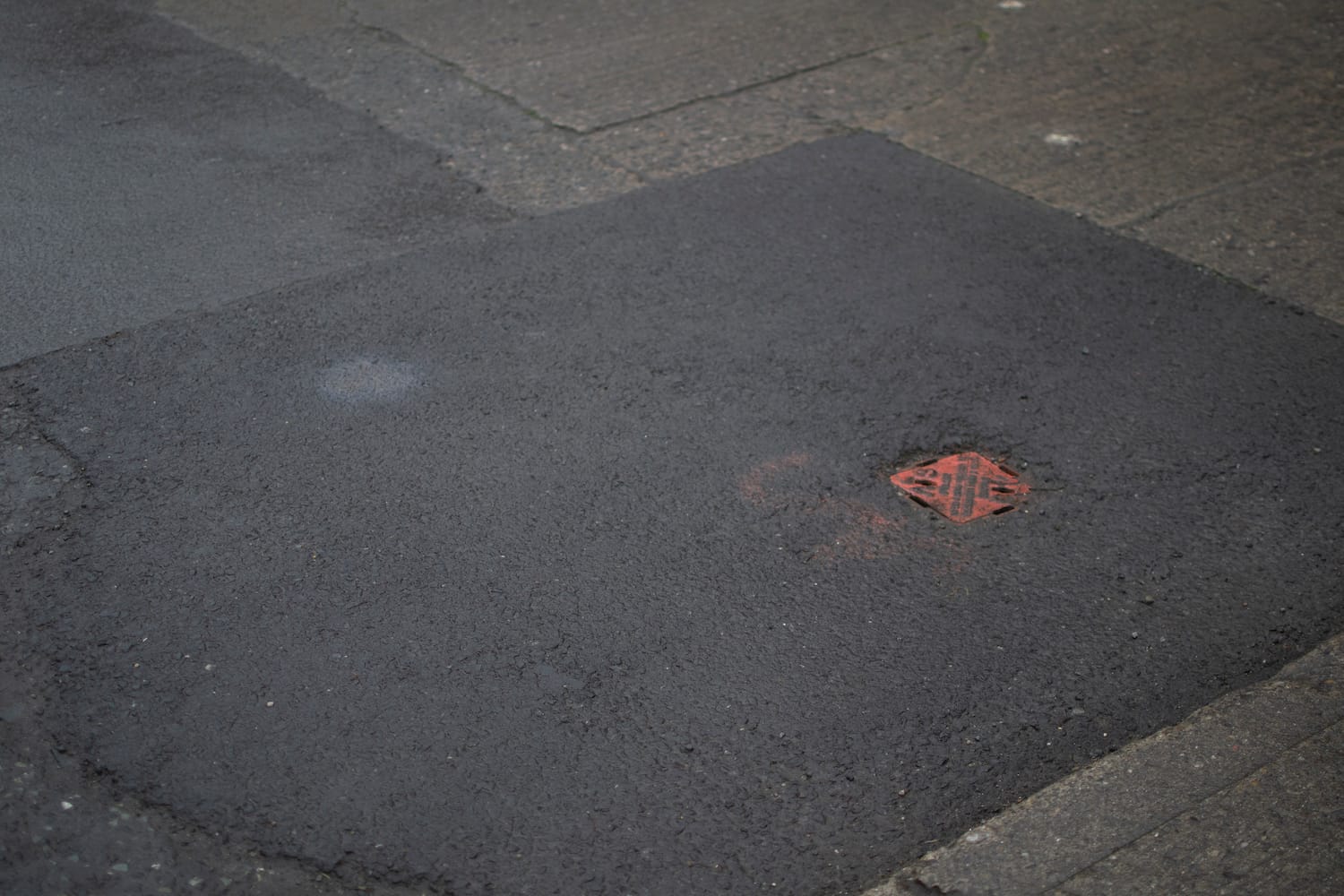What’s the best way to tell area residents about plans for a new asylum shelter nearby?
The government should tell communities directly about plans for new asylum shelters, some activists and politicians say.
In the last three years, Dublin City Council issued 30,800 “road-opening” licences – licences to dig holes in roads – across the city.

Every week, Keith Adams avoids uneven patches on cycle lanes when commuting from Whitehall to Drumcondra.
That means cycling further onto main roads and into the territory of cars, he says.
Sometimes, it’s man-hole covers that bother him, sometimes it’s poorly laid tarmac spread over where utility companies dug up to fix underground problems make the roads unsafe.
Whenever new tarmac is put down, it’ll naturally subside, he says, creating an uneven footpath or a dip for a bicycle. “So I think there needs to be better workmanship whenever new tar is relayed.”
At bumpy spots, he can be left with a choice of gliding up onto a footpath or out into the road. “And if you choose to use the roads, I think the cars often become very impatient wondering why you’re not using the cycle lane,” said Adams.
“I think they often don’t understand why cyclists sometimes avoid cycle lanes when parts of it is unsafe,” he says.
Utility companies dig up council roads thousands of times a year, but they don’t always return the surface back to the condition they found it in.
That plays into a bigger current debate, about how the upkeep of the city’s deteriorating roads should be funded and who should chip in.
On a long stretch of South Circular Road that passes through Rialto and Dolphin’s Barn, some shop-owners say they have had it with utility dig-ups.
Patches of dark tarmac with sharp and rough edges have made footpaths uneven. The ground looks like it has been cut open and sewn back together, again and again.
On a windy Saturday morning, two kids do wheelies up South Circular Road, a few steps before the Rialto Day Care Centre.
Noeleen Rooney, who’s run Dolphin Electrical at 396 South Circular Road for 40 years, says diggers have turned up in front of her shop every Saturday morning for over a year.
“I’m just surprised they’re not here today,” Rooney said, before waving to an older man, a neighbour, who blows kisses through the window as he passes by. “The eejit,” she said, laughing.

From the window, she points to the street outside and how uneven it is. She shakes her head.
The area Rooney points to is in the middle of the road, and it looks swollen. Irish Water is behind most of the dig-ups as far as she knows, Rooney says.
“I was told that there were leaks if they were digging up the road and replacing the pipes, and that was last year. Why do they still have leaks is beyond me,” said Rooney, as her shop’s radio played the news.
A spokesperson for Irish Water said the body had teamed up with Dublin City Council to finish a “significant and complex watermain improvement project” on South Circular Road.
The project was part of “Irish Water’s national Leakage Reduction Programme”, they said, and it’s wrapped up now.
“The works involved the replacement of nearly 1.2km of old cast iron watermains” to lower leakage, they said.
It took a long time because the work had to be done in phases to minimise traffic disruption, and mostly on weekends and school holidays, the spokesperson said.
The way the road looks now isn’t supposed to be the final version. “Permanent reinstatement works will commence prior to Easter 2022 when weather conditions have improved,” they said.


Companies needing to dig up the road have to apply for a licence or a permit. They pay a deposit to the council, calculated based on the size of the hole and how much it would cost to repair.
Once the works are done, Dublin City Council inspects the road repairs within 90 days, said a spokesperson.
If the job meets their standards, “then the roadworks enter a two year guarantee period, after which a final inspection takes place by Dublin City Council”, they said.
The company gets the money back after two years, once the council is sure the work holds up long-term.
“Where a defect has been detected during an inspection, a defects notification is issued to the utility company with the required action outlined,” the Council’s spokesperson said.
In the last three years, Dublin City Council issued 30,800 “road-opening” licences – licences to dig holes in roads – across the city, according to an official response to a query from Green Party Councillor Michael Pidgeon.
From the last five years, there are still 824 rejected T5s – which are the notices of completion that the road-opener files – outstanding, said the response, including 135 from 2017 and 336 from 2018.
For those that are outstanding, the council’s Infrastructure Management Unit tells the utility to do the repair to the right standard, said a council spokesperson, after which the unit inspects again. “If the repair is in a hazardous condition, a member of the IMU team will contact the utility representative requesting immediate attention.”
Dublin City Council has been struggling to fund maintenance of its roads.
An August 2020 report to the council’s finance committee highlighted how an earlier visual-conditions survey had found that 223km of the local road network needed structural restoration or road reconstruction.
But, at that point, the council could only fund the road maintenance division to do 14km of repairs a year, it said.
Among several issues highlighted in the August 2020 report was the challenge of utility openings and reinstatements.
Council staff have a role in checking these, it says. “However, it is not possible for supervisory staff to be present and check the quality of reinstatement at all openings.”
These road openings have a detrimental impact on the structural integrity of roads, and reduce roads’ “design life”, it says. “This phenomenon necessitates additional maintenance works on the affected roads and thereby the need for additional funding and resources.”
The council’s 2022 budget says it’ll spend a little over €12 million on road maintenance this year.
Of that, €8.5 million is for reconstructing “footways and carriageway resurfacing”. Which includes work to ensure “that all openings made in the public footways and carriageways by statutory utilities are reinstated to specified standards”.
Adams, the commuter from Whitehall, says maybe the council could open up a citizen portal for reporting badly repaired parts of the road. “For areas that have very bad surfaces and should be looked at.”
Mary Callaghan, a Social Democrats councillor, and a member of the council’s finance committee says that less extra funding would be needed if the current rules were enforced properly.
“Is Dublin City Council going back and insisting that utility companies repair the roads to the level that is required?” she said.
“I think often enforcement of the rules should be stronger so that we ensure that we are not spending a huge amount of money fixing the roads that utility companies have damaged,” she said.
Séamas McGrattan, Sinn Féin councillor and chairperson of the council’s finance committee, says he is more concerned about the overall challenge in funding road maintenance, than how well utility companies resurface the road once they’re finished.
The council’s head of finance Kathy Quinn has been corresponding with the Department of Transport over how it expects the council to fund maintenance of its roads, and – especially given the vulnerability of cyclists to potholes – its growing cycle-lane network.
The council needs central government funding, she wrote.
“We get a lot of funding and we’re not disputing that. But it’s funding for the creation of the asset,” said Quinn, at the January meeting of the finance committee.
“And the whole, kind of, elephant in the room of how then does that get maintained, just isn’t answered,” she said.
McGrattan has little hope for improvement of road surfaces at the current rate of funding, he said. “It will take us 100 years to improve the road network at the current rate of funding.”
(In her letter to the Department of Transport in May 2021, Quinn, the council’s head of finance, wrote: “If investment is to continue at this level, we will resurface each road once in every one hundred years.”)
The upshot of that is that roads remain dangerous, said McGrattan.
“Generally, what you will see is a tarmac temporary job done to fix dangerous damage but significant funding needs to be provided if we’re ever going to tackle the issue,” he said.
[UPDATE: This article was updated at 2pm on 9 February to include responses from Dublin City Council.]